Owning a car is no easy responsibility. It is very similar to having a pet or even a kid that it requires constant check-up and of course maintenance to ensure that it is in tiptop shape. Given that it holds your life, the lives of your passengers, and all the people you share the road with, it needs to be always reliable and secure.
One of the things that you never neglect to check regularly is the coolant level of your car. This is key, so your car’s engine never overheats. Your car’s engine is working extensively when it is being driven, and as a result, heat is being generated.
If your car doesn’t have enough coolant, then you are faced with your engine overheating which can lead to other inconveniences for you.
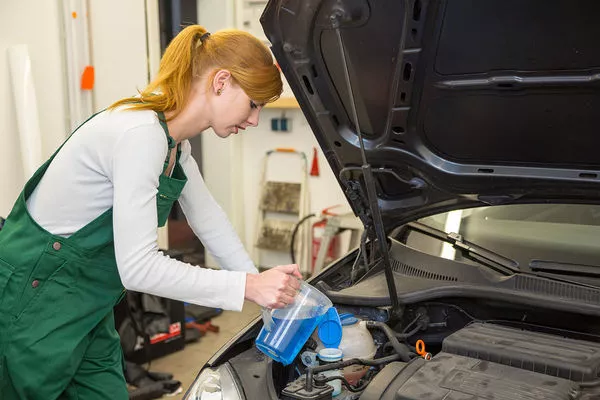
One of the things that you never neglect to check regularly is the coolant level of your car
How important is the engine's coolant?
Basically, the engine’s coolant is responsible for keeping the engine at its optimal running temperature. It is composed of water and antifreeze, and it comes in various colors like yellow, green, red, pink, and orange.
It is the fluid that is tasked to absorb the heat from your car’s engine and then dispels it through the radiator. It can also be dissipated via the heat exchanger in the passenger compartment when you turn on your heat during the winter season.
Coolant or better known as antifreeze is distilled water combined with ethylene or propylene glycol. Antifreeze protects your car from overheating because it doesn’t allow the engine water from getting too high and eventually for it to boil. It also prevents corrosion and rust on the metal parts of the car as well as deterioration on rubber and plastic.
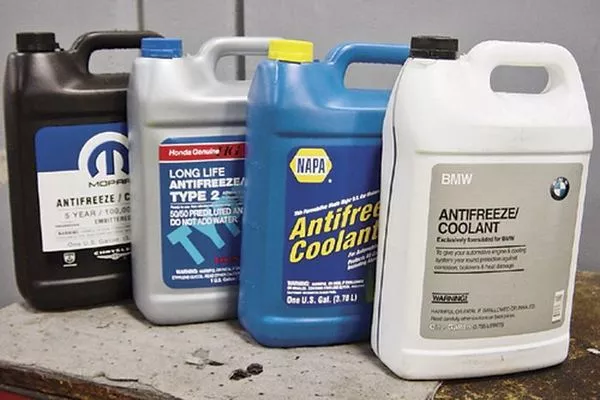
Antifreeze protects your car from overheating
>>> Read more: Distilled water vs Coolant: Which is the best product for your radiator?
How to check your coolant level
With this in mind, since you can check the coolant level of your car yourself then make sure that you do it regularly. It is effortless and won’t take you more than 3 minutes to check. Yes, that’s correct! You don’t need a mechanic to check your coolant level at all, so this means no excuses for you. Philkotse.com prepared a step by step guide on how to check your coolant level in three steps:
Step 1
Open your car’s hood.
Step 2
Locate for your engine coolant reservoir. This is usually colored white or grey with a brightly colored cap.
Step 3
Look for the level markings of the coolant reservoir. Often it will have Low and Full or sometimes Min or Max labels. This is usually located at the side and will dictate the current status of your coolant. If the coolant is showing to be in the Full or Max mark, then your car has enough coolant.
If it is showing Low or Min, then it is time to add coolant to your reservoir. Always remember not to add too much coolant. It should only be filled up until the Full or Max marking. You can replenish your coolant easier with the use of a funnel.
[Video instruction] How to check or test car coolant
>>> Also check: Top 4 essential fluids in your car.
Some would prefer not going through the route of needing to open their car’s hood or their coolant reservoir. They simply go straight and check the markings on the side.
Always confirm with your car’s manual what type of coolant is required for your car. Again, checking this before you drive off is very beneficial and can ease you of any dramas or worries along the way.
Note as well that it should always be a 50/50 mix of water and coolant. Some coolants are already pre-mixed, so it also pays off to read the labels and the instructions.
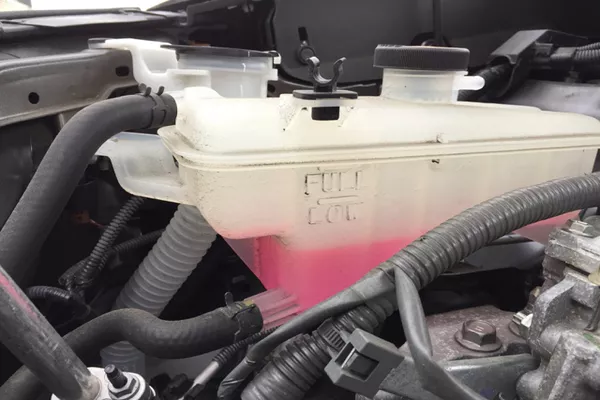
Look for the level markings of the coolant reservoir
>>> Related: 4 symptoms of a bad thermostat, possible causes & replacement costs
Only in dire emergencies should you use plain water to the coolant system. Most of the car’s engines today have aluminum cylinder heads which would require only the protective anti-corrosive quality of antifreeze.
For some cars, coolant recovery systems are pressurized and would have a radiator pressure cap instead of the usual bright cap. Older cars meanwhile may have the tendency not to have the coolant reservoir altogether so checking the coolant level would require you to open the radiator cap.
![]()
For some cars, coolant recovery systems are pressurized and would have a radiator pressure cap
What to pay attention to when adding coolant to the car's engine
Firstly, as an additional maintenance tip, never add coolant when the engine is still hot. If you need to replenish the coolant, you need to wait for the engine to cool down. Adding coolant while the engine is still warm is dangerous for you as you might burn yourself.
It can also damage your car when it cracks your engine block. Don’t even attempt to open the caps either as due to heat pressure; hot coolant might be ejected.
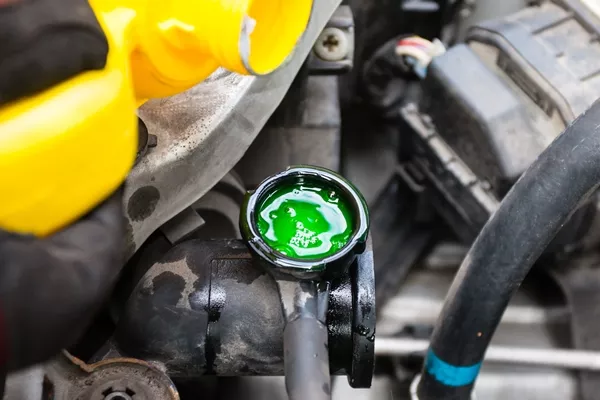
Never add coolant when the engine is still hot
>>> Related: Symptoms of a bad or failing water pump in cars
Usually, coolant is yellow, blue, green or red, so if it appears colorless, rusty or you see some that are floating around then go for a clean slate. Simply flush your cooling system down to the very last drop and replace it with new antifreeze.
If the coolant appears to have an oily or sludgy surface though, go to your car mechanic as soon as possible. This might be an indication of an internal head gasket leak, and your car needs to be checked for that.
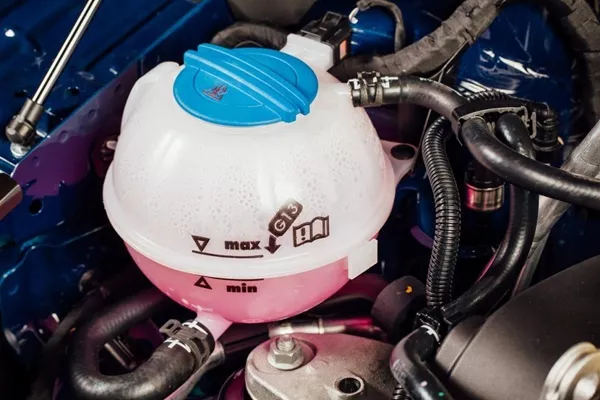
If the coolant appears to have an oily or sludgy surface though, go to your car mechanic as soon as possible
>>> Grasp your attention: How to deal with rust on your car.
Secondly, making sure that you have enough coolant is essential, but draining it should also be done from time to time. This practice removes the dirt and rust particles that have accumulated on your cooling system.
Understand that the antifreeze is a preventive layer for corrosion, but over time, coolant will also break over, and corrosion will inevitably happen.
Not providing due maintenance to your cooling system will eventually cause everything to rust from the inside out with the engine block being the likely source of the most significant rust risk.
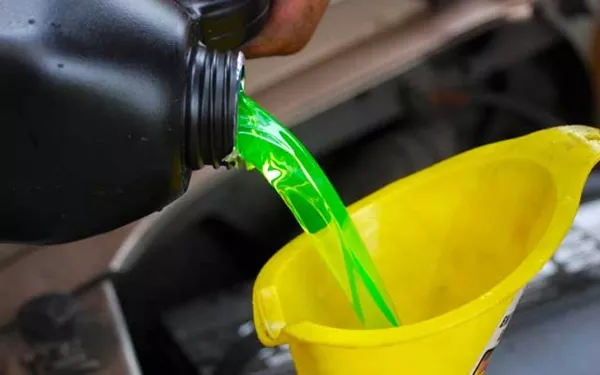
Making sure that you have enough coolant is essential, but draining it should also be done from time to time
>>> Related: Car's overheating with full coolant: What's wrong?
Rust will then clog up the tiny pores or passages in the radiator, and the heater and this blockage can cause that dreaded overheating problem. When your car overheats, you are most definitely up in losing your cool and overheating yourself once you are done with your car mechanic.
Again, the coolant levels are easy to understand, and it is not such a hassle to check regularly. It can even be done weekly. Just like you would for a pet or your kid, you don’t take shrug off any negative symptoms.
You do the extra maintenance since prevention is vital. It is the same case by making sure that your car is not hit by car fever.
>>> Check out more car tips and advice on Philkotse.com.
Recent posts
- 4 signs of a sick cooling system May 31, 2019
- Basic care tips for car radiator that every driver should know Aug 17, 2022
- Car maintenance checklist after a long road trip Mar 20, 2019
- Know Before Go: Car care checklist before a long-distance drive Jul 18, 2018
- 3 must-know tips to cool down your car as quickly as possible in the summer Oct 19, 2020












